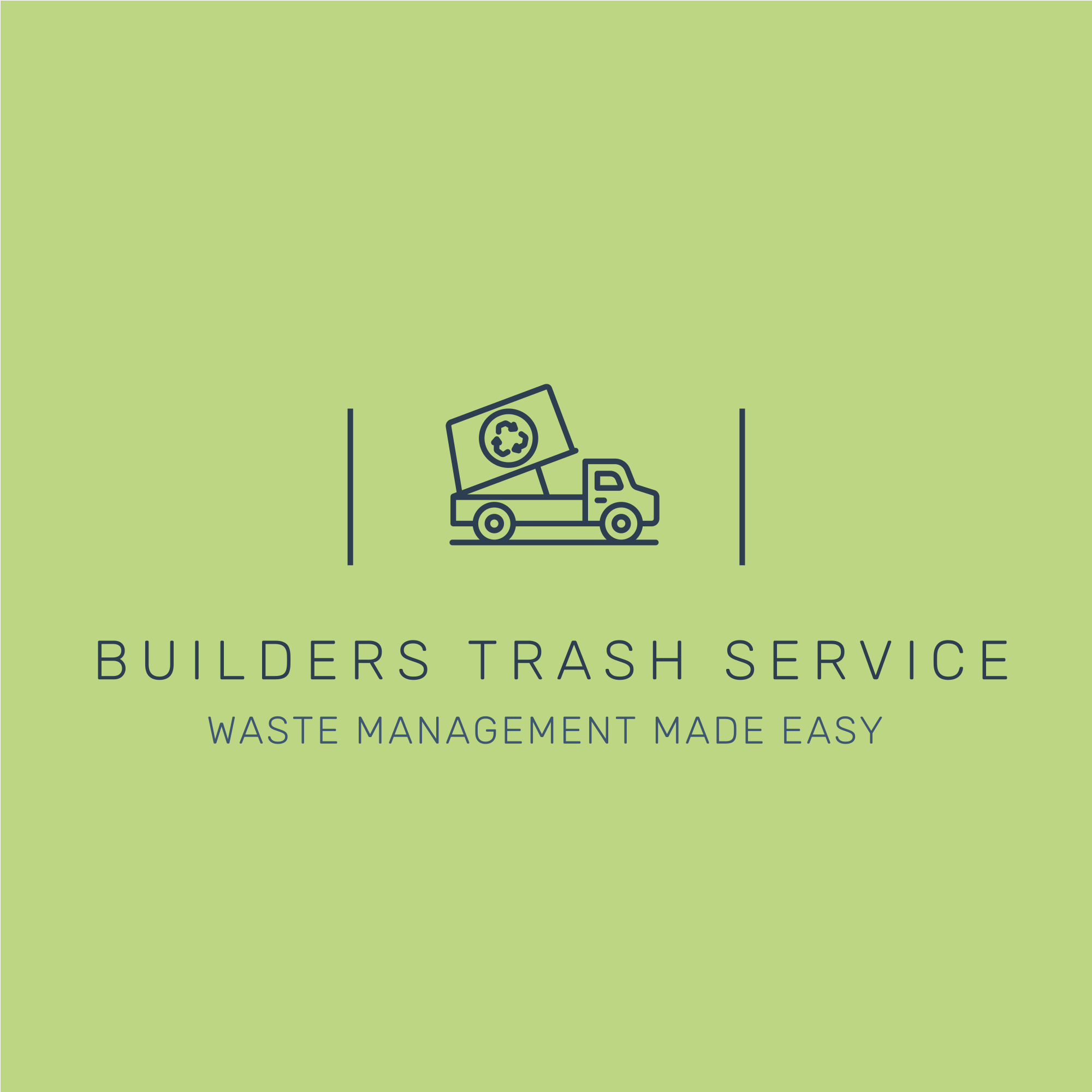Any construction project of any scale requires a dumpster for the waste management. The amount of dumpster space is estimated based on two factors: how much waste is being generated and how much segregation of waste will happen throughout the project.
In this Builders Insight post, we’ll look at using dumpsters for segregation of waste and dumpster sizes.
How dumpsters are sized
The measurement unit “yard” is used for estimating the size of dumpsters. This specifically refers to cubic yards of waste.
Calculating a cubic yard can be difficult, but here’s a simple visual: Imagine a space that is 9 feet long, 3 feet wide, and one foot deep. The amount of concrete, soil, or waste needed to fill that space is one cubic yard. As a rule of thumb, it’s about 9 wheelbarrows full of soil. A 20-yard dumpster is about 6 pickup truck loads of material. Waste Services keep these approximations in mind during sizing.
Weight of a dumpster
Weight is another factor. A cubic yard of dry wood and gypsum has a very different weight than a cubic yard of concrete. Filling a cubic yard with drywall carries about 500 pounds of weight, whereas a cubic yard of concrete or asphalt weighs about 4,000 pounds. The same size of space filled with roofing shingles can weigh 4,000 pounds to over 7,000 pounds, depending on the shingle material.
How to choose a dumpster
The easiest way to choose a dumpster is to not choose a dumpster. Call a dumpster rental company and tell them what you’re doing. They can help you decide what to get.
If you decide to do your own calculations, you will need to figure out what you’re discarding, about how much volume it will create and how much it will weigh. Since trucks can only carry a finite amount of weight, the weight is sometimes the deciding factor on waste management.
10-yard dumpster
The smallest size of dumpster that Builders Trash Service offers for commercial projects is 10 cubic yards. For attic cleanups, single room renovations, and heavier debris clearing projects, like concrete or shingles, use the 10-yard dumpster.
15-yard dumpster
This is great for kitchen and bathroom projects where there might be tile along with gypsum and other materials. It’s a great size for heavy items like wiring and brick. For segregated materials that are sorted on site, like wiring that’s being taken for recycling and is kept out of the larger waste flow, use the 15-yard dumpster.
20-yard dumpster
A 20-yard dumpster is excellent for most light demo projects. Residential projects use a 20-yard dumpster simply because it will fit best in the driveway. 20-yard dumpsters can handle most smaller-scale projects. New buildings with a smaller load of waste may also opt for this size dumpster.
30-yard dumpster
Medium or large-scale demolition projects need a 30-yard dumpster. To avoid overflow, the right waste management service will empty 30-yard dumpsters multiple times as opposed to trying to transfer the waste all at once. This reduces the risk of waste falling out during the service. During projects that involve concrete or asphalt remove, weight is also an important consideration. A 30-yard dumpster filled with concrete or asphalt may be too heavy for most trucks to move.
Hiring the right waste removal team
When you begin the estimating process, it’s difficult to know how much dumpster space you’re going to need. A roll-off dumpster rental service and waste management team can determine how much dumpster space you’ll need based on the size of the project and the work being completed.
Choosing the right team for removal can be vital. For example, finding a team that’s willing to provide you with proof of delivery to the right locations, etc. will be important for documentation on the contracts. They can also make recycling, donations, and more easier.
Segregating waste for removal
Most times, you’ll find it’s easier to segregate waste for removal. Smaller dumpsters for wiring, shingles, wood, and asphalt will make it easy to deliver them to the right locations later.
Using small dumpsters also has the advantage in that they are typically not as tall, preventing the dumpster toss that can lead to some injuries.
All-in-one C&D waste removal
At Builders Trash Services, we make it easy to simply put all the waste into a single dumpster. The recycling facility sorts most of the waste.
Check with your waste removal service what they need in order to handle your C&D waste most effectively. Bringing them in the beginning of the estimating process will save a lot of hassle and expense later.
Delivery, set-up, and pricing
When you contact a dumpster rental company near you, you need to ask about their drivers and their trash removal services.
Less professional services have drivers that are less adept at getting dumpsters into places that have a tight fit, like a parking lot or driveway where the dumpster might be near wires or buildings. Experience with delivering dumpsters is vital. No one wants to see valuable property destroyed by the dumpster rental company.
Select a flexible team that’s willing to adapt to the project’s needs. If you do this, the team will often plan the time of delivery and the time of waste removal, in advance. If the project expands or takes longer than planned, the company would help make it easy to leave the dumpster, remove them with a day or two’s notice, or empty them more frequently than planned.
Customer service is vital, since taking good care of you, the contractor, means taking good care of your customers.
In Columbus, Ohio
In the Columbus, Ohio, area, contact Builder Trash Services. We are a full-service C&D services company. We not only deliver the dumpsters, but we offer a 100% recycling program that can make your business easier, more marketable, and even more profitable.
Our team is available to assist whenever you need us. Call us at (614) 444-7060.
